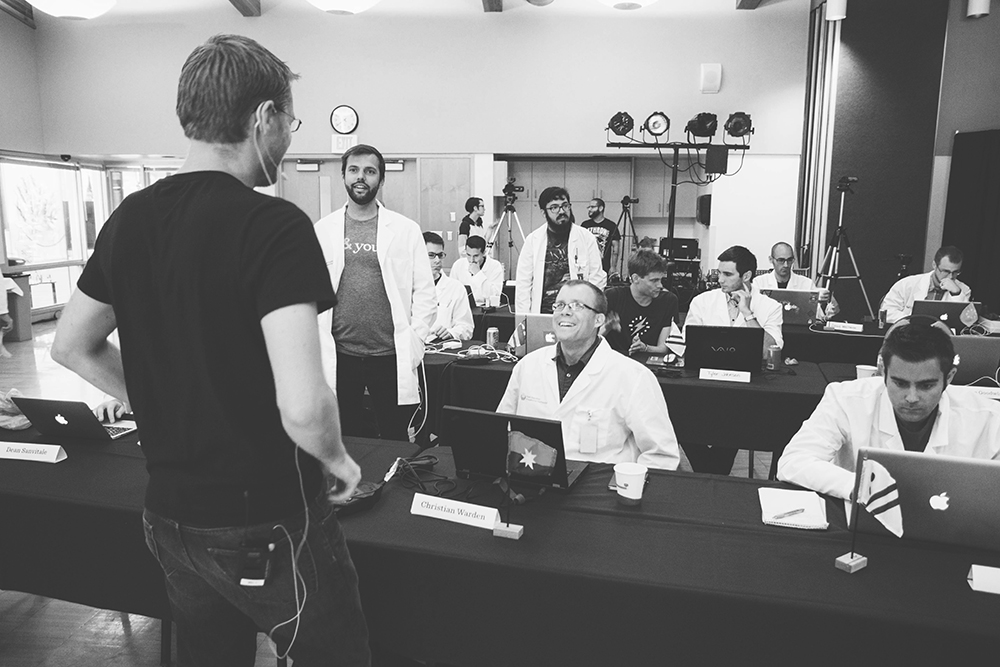A training story
In three weeks, the &yet training team is excited to lead Fluent Conf 2015 attendees in three training sessions covering subjects like Native Web Application development, Node.js security, and WebRTC. One of our latest training offerings is Building Native Web Applications, led by Henrik Joreteg and Luke Karrys.
Henrik, prolific module creator, is a foremost developer tackling the subject of Native Web Applications (aka Single Page Apps) in the JavaScript community. He has pioneered many techniques for building stateful JavaScript applications, especially those with a realtime aspect.
Most recently, he leads development on the Ampersand.js framework, which has seen rapid adoption among many prominent Backbone.js developers. Henrik also created the SimpleWebRTC library, Talky.io, is the author of the book “Human JavaScript”, and frequently speaks at JS events, including this year’s Fluent Conf.
Luke, a high quality Node.js front-end developer, also leads development on Ampersand.js as a core contributor. Additionally, he’s a veteran instructor of &yet’s intense and immersive “Human JavaScript: Live” training endeavor. He recently participated in the creation of the ultimate project: a newborn daughter.
The course description states:
Henrik and Luke will lead the course in building a modern, well-structured application from scratch by combining first class approaches and a carefully curated set of tools including:
Ampersand.js: A highly modular set of libraries for building Advanced JavaScript apps.
React: Facebook’s revolutionary view library.
WebPack: Module bundler and development server.
ES6: The next generation of the JavaScript language.
Node.js: The JavaScript platform built on Chrome’s runtime.
But what can else can attendees expect?
Henrik Joreteg: Rather than just theory and buzzwords attendees will build and deploy an application from scratch against a real third-party API and auth system (GitHub’s) and accidentally become familiar with some new, powerful tools in the process. So many people are overwhelmed with the plethora of frontend tools available. The goal is to leave people feeling empowered, building something real, and not add to that confusion.
Luke Karrys: Building a real live working application is often the best way to learn new tools and paradigms. Add in instructors to answer all your questions and walk you through the challenging aspects, and this training will provide the perfect platform to get up to speed with some of the best and most powerful tools and concepts in frontend development today.

Our team is excited to share a training experience like “Building Native Web Applications” with Fluent Conf this year. This particular course has been two years in the making, and includes a lot of the principles and practices that &yet has been teaching to clients for years.
Other &yet courses at Fluent
If you’re attending Fluent Conf, we’re also guiding two other trainings. &yet CSO and ^lift security lead Adam Baldwin and requireSafe developer Michael Garvin are teaching Securing Node.js Apps, based on the popular Node Security Training, which focuses on building, exploiting, and fixing security issues in the most used Node.js frameworks, templating engines and database drivers.
The other training is “Creating Production-Ready WebRTC Applications,” led by prominent WebRTC expert, Philipp “Fippo” Hancke and peer to peer applications master scholar David Dias. This latest &yet training offering begins at the start of WebRTC technology, touching on browser compatibility, and covering all the elements you need to create a realtime communications app.
For more information on Fluent Conf trainings or to register, go to fluentconf.com.
For more on &yet training, including custom-tailored training for your team’s needs, reach out at andyet.com/training.